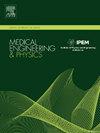AMRM: Attention-based mask reconstruction module for multi-classification of breast cancer histopathological images
IF 1.7
4区 医学
Q3 ENGINEERING, BIOMEDICAL
引用次数: 0
Abstract
Nowadays, breast cancer is a leading cause of cancer-related mortality among women globally. Approximately 10% to 15% of breast cancer patients fail to undergo timely screening, resulting in a missed opportunity for optimal treatment. Computer-aided diagnosis (CAD) systems have been used successfully in breast cancer diagnosis. Nevertheless, current systems have encountered difficulties in achieving a high degree of accuracy, with the majority of research efforts focusing on the binary classification that distinguishes benign from malignant. Different subtypes of breast cancer require different targeted therapeutic approaches. Therefore, the precise classification of the breast cancer subtype has a major impact on treatment decisions. To improve the accuracy of breast cancer multi-classification, a novel Attention-based Mask Reconstruction Module (AMRM) is proposed to improve the performance of the model. AMRM extracts features from breast cancer histopathological images through the attention module and then performs mask reconstruction to generate reconstructed features. These reconstructed features were used in a multi-classification task to accurately classify histopathological images of breast cancer. AMRM enables the network to effectively identify background and foreground in histopathological images, reduce background interference, improve adaptability to background changes, align the features extracted by the model with the pathologist's expectations, and improve classification accuracy. Results from experiments conducted on the BreakHis dataset show that the inclusion of AMRM resulted in a significant improvement in multi-classification accuracy for the AlexNet, VGG11, ResNet-50 and Data-efficient Image Transformer (DeiT) models, reaching 88.48%, 93.40%, 96.49% and 94.10% respectively. Compared to the baseline model, accuracy increased by 8.28%, 2.11%, 1.27% and 1.26% respectively, demonstrating a significant improvement.
AMRM:基于注意力的乳腺癌组织病理图像多分类掩模重建模块
如今,乳腺癌是全球女性癌症相关死亡的主要原因。大约10%到15%的乳腺癌患者没有及时接受筛查,从而错过了最佳治疗的机会。计算机辅助诊断(CAD)系统已成功应用于乳腺癌的诊断。然而,目前的系统在实现高度准确性方面遇到了困难,大多数研究工作都集中在区分良性和恶性的二元分类上。不同亚型的乳腺癌需要不同的靶向治疗方法。因此,乳腺癌亚型的精确分类对治疗决策有重大影响。为了提高乳腺癌多分类的准确率,提出了一种新的基于注意力的掩模重建模块(AMRM)来提高模型的性能。AMRM通过注意模块从乳腺癌组织病理图像中提取特征,然后进行掩模重构,生成重构特征。这些重建的特征被用于一个多分类任务,以准确地分类乳腺癌的组织病理图像。AMRM使网络能够有效识别组织病理图像中的背景和前景,减少背景干扰,提高对背景变化的适应性,使模型提取的特征与病理学家的期望保持一致,提高分类精度。在BreakHis数据集上进行的实验结果表明,AMRM的加入使AlexNet、VGG11、ResNet-50和Data-efficient Image Transformer (DeiT)模型的多分类准确率显著提高,分别达到88.48%、93.40%、96.49%和94.10%。与基线模型相比,准确率分别提高了8.28%、2.11%、1.27%和1.26%,均有显著提高。
本文章由计算机程序翻译,如有差异,请以英文原文为准。
求助全文
约1分钟内获得全文
求助全文
来源期刊

Medical Engineering & Physics
工程技术-工程:生物医学
CiteScore
4.30
自引率
4.50%
发文量
172
审稿时长
3.0 months
期刊介绍:
Medical Engineering & Physics provides a forum for the publication of the latest developments in biomedical engineering, and reflects the essential multidisciplinary nature of the subject. The journal publishes in-depth critical reviews, scientific papers and technical notes. Our focus encompasses the application of the basic principles of physics and engineering to the development of medical devices and technology, with the ultimate aim of producing improvements in the quality of health care.Topics covered include biomechanics, biomaterials, mechanobiology, rehabilitation engineering, biomedical signal processing and medical device development. Medical Engineering & Physics aims to keep both engineers and clinicians abreast of the latest applications of technology to health care.
 求助内容:
求助内容: 应助结果提醒方式:
应助结果提醒方式:


